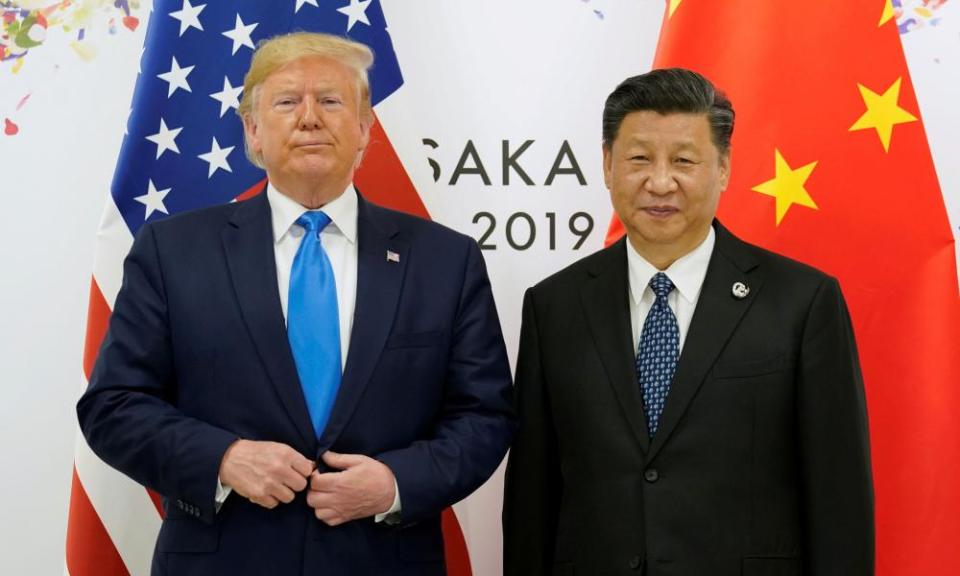US power in Asia Pacific falls amid mishandling of Covid, Australia's Lowy Institute finds

The United States remains the top power in the Indo-Pacific but has suffered the biggest relative fall in its standing in the region over the past year, partly because of the loss of prestige over the mishandling of Covid-19, according to the Lowy Institute’s Asia Power Index.
Releasing the latest annual results on Monday, the Australia-based foreign policy thinktank said while China’s standing had stalled, the rising power remained in second place and was believed to be on track to match the US by the end of this decade.
Australia, meanwhile, was one of the few countries to gain in the scores of comprehensive power this year, overtaking South Korea as the region’s sixth most powerful country, helped by growth in its regional cultural influence and expanding defence cooperation. Vietnam (ranked 12th) and Taiwan (14th) were also on the rise.
“This year we’ve seen an acceleration in power shifts, but driven really more by under-performance than than anything else,” the project director, Herve Lemahieu, told Guardian Australia.
“That’s as a direct consequence of the pandemic.”
The competent handling of the Covid-19 pandemic by Vietnam, Australia and Taiwan “was a necessary, but not sole condition” for improving their regional standing, according to the Lowy Institute report.
In a separate section, Japan, Australia, Singapore and South Korea are classed as the top “overachievers”, meaning they have “more influence than their raw capabilities would indicate” – suggesting skill in working collaboratively with other nations to pursue their interests.
The annual index aims to provide a snapshot of the shifts in influence in the fast-changing Indo-Pacific region, ranking 26 countries and territories by the overall power they wield.
It takes into account hard power factors such as military capability and defence networks, along with soft power levers like diplomatic and cultural influence.
But according to the latest report, the once-in-a-century pandemic means governments and societies “now face a perfect storm of public health, economic and strategic challenges in ways few could have imagined a year prior”.
While power shifts “happen only slowly outside of wartime”, the pandemic has triggered “a race to the bottom”, with 18 states in the Indo–Pacific region experiencing significant downward shifts in their relative power in 2020. America’s standing has waned in all but one of the eight main measures covered in the index.
The top-ranked powers remained the US, followed by China, although America has seen a halving of its 10-point overall lead over its rival in the past two years.
Japan, India and Russia were next in the rankings list, but those three countries also suffered falls in their scores.
The report warns that of all countries in the Indo–Pacific, India’s economy has lost the most growth potential as a result of pandemic-inflicted damage – meaning “its position as a future peer competitor to China has become less certain”.
The Lowy Institute points to the Trump administration’s unilateral instincts as one reason why the US underachieves against its ability to wield broad-based power in Asia.
“America has suffered the largest reputational hit in the region for its domestic and international handling of the Covid-19 pandemic,” the report says. “The result is a powerful reminder that legitimacy and leadership on the world stage start with the capacity of leaders to govern well at home.”
With China’s economy predicted to bounce back faster than any other major economy, the country is set to entrench its economic centrality in its region, while the relative importance of the American economy in Asia is tipped to decline.
The report notes China has boosted its military capability by spending on weaponry that could threaten American and allied bases in the region, but it suffers from a lack of trust among neighbours.
Related: Liberalism is facing a crisis and it's a cop-out to blame China and Russia, analyst claims
While China now has 229 of the world’s 500 most powerful supercomputers, compared with 117 in the US, the report says America has launched three times more satellites into space as China in the last three years.
China is on track to close its overall power gap with the US within 10 years, but according to the report is “unlikely to pull ahead by a meaningful margin” because of projected declines it its workforce, leading to social and economic challenges.
“Meanwhile, the one-party state still spends more on projecting power inwards, on internal security challenges, than it does on projecting it outwards, on military spending.”
Australia’s 1.1-point gain in its comprehensive power score helped the country to leapfrog South Korea, with its greatest improvement being in cultural influence, where it moved up four places.
This can be partly explained by the addition of Papua New Guinea to the latest edition of the Asia Power Index, registering more of Australia’s influence in its immediate neighbourhood.
Despite being a middle power and having “a far more modest” military capability, Australia ranks second behind the US when it comes to defence networks. The finding comes amid rising tensions between Australia and China.
“We’re a far nimbler player than the US is – we carry less great power baggage,” Lemahieu said of Australia. “But at the same time, our foreign policy has become much more securitised and China driven, and south-east Asia isn’t necessarily all on board with that.”
Lemahieu said even some of Australia’s closest partners, like Indonesia, were “not necessarily likely to commit to becoming part of this military and a strategic counterweight to China’s military adventurism”.
The Lowy Institute scores are based on 128 indicators across themes such as military capability and defence networks, economic resources and relationships, diplomatic and cultural influence, and resilience and future resources.
The thinktank said it had added three new indicators this year in order to track perceptions of the handling of the coronavirus pandemic, major ecological threats, and defence dialogues.

